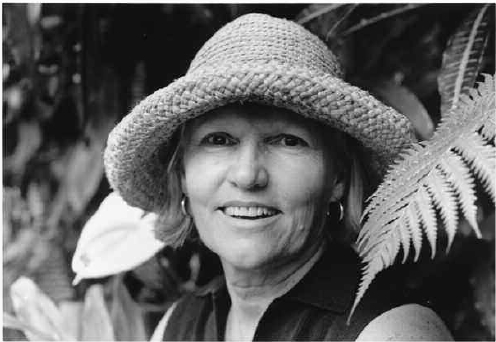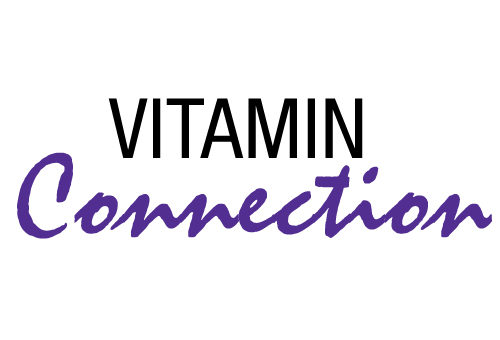During the past several columns, we have discussed the greatly unappreciated role of magnesium in health with Andrea Rosanoff, Ph.D. This month, we will conclude the series in which Dr. Rosanoff has been so helpful by considering a few more special health situations and then summarizing magnesium needs, calcium–magnesium balance and briefly reviewing magnesium’s role in health.
Dr. Rosanoff is a nutritional biologist and the director of research at The Center for Magnesium Education & Research, LLC in Pahoa, HI. Dr. Rosanoff spent her undergraduate years at the University of California at Berkeley studying biological sciences and then taught science for several years before returning to graduate school. After earning her M.S. and Ph.D. degrees in nutrition from the University of California at Berkeley in 1982, Dr. Rosanoff began her study of nutritional magnesium, especially as it relates to health in the developed world. Her work as senior chemical specialist for Dialog Information Services and information analyst at Chevron Res & Tech. Corp. gave her early training of and access to the online scientific literature, which she now uses in her research and teaching on all aspects of nutritional magnesium.
Her main research interests include the development of the nutritional magnesium paradigm of cardiovascular disease, the role of magnesium nutrition in osteoporosis, diabetes, psychobiologicaland renal disease, global spreading and generational effect on nutritional magnesium of the processed food diet, and the role of magnesium in stress reactions. Some of her recent publications include studies on changing food crop magnesium concentrations and their possible impact on human health, magnesium supplementation and hypertension, a comparison of magnesium supplements with statin pharmaceuticals, and the rising calcium to magnesium ratio of dietary intakes in the United States.

|
|
| Andrea Rosanoff, Ph.D. |
In addition to her work presented in peer-reviewed journals and at scientific conferences, Dr. Rosanoff is interested in explaining health aspects of nutritional magnesium to the general public. She co-authored with the late Mildred S. Seelig, M.D., a book entitled, The Magnesium Factor (published in 2003), which discusses scientific literature through 2002 on nutritional magnesium’s impact on risk factors for cardiovascular disease. She wrote, produced and narrated an animated two-minute video entitled, Balancing Calcium and Magnesium in 2008, which can be viewed at her website (www.MagnesiumEducation.com). Through the Center for Magnesium Education & Research, Dr. Rosanoff continues to foster knowledge of magnesium research; with IAPN the Center sponsors International Symposia bringing together magnesium researchers from all over the world to discuss and present research on magnesium in agriculture and its connection to human nutrition. The Center is also spearheading a group to apply to the U.S. Food and Drug Administration for a health claim for magnesium in hypertension plus a second effort to reevaluate the serum magnesium reference range.
Passwater: What about the need for magnesium during sports and vigorous exercise?
Rosanoff: Vigorous activity can influence nutritional magnesium status, and magnesium status can influence physical performance as well as dictate whether vigorous physical activity is healthy or dangerous. This is true whether the runner is fit or unfit, trained or untrained.
Nutritional magnesium is deeply involved in adenosine triphosphate (ATP, energy) production, oxygen uptake, central nervous function, electrolyte balance, glucose metabolism and muscle function, including that all-important muscle—the heart.
During both racing and training, vigorous exercise ups the body’s requirement for nutritional magnesium—not only because of the higher metabolism and muscle contraction where magnesium plays crucial roles, but also because of increased magnesium loss in sweat and urine. It has been estimated that athletes’ general requirement for nutritional magnesium is easily 10–20% higher than that of the general population. At the same time, nutritional magnesium can be low in modern, processed food diets. Without a reliable, widely available marker for clinical magnesium status (serum magnesium does not adequately reflect body magnesium status), the combination of increased need for racing/training plus marginal magnesium intake can make the seemingly healthy choice of running just the opposite.
When magnesium status is healthy and adequate, blood magnesium shows large swings during  exercise, more than 10 times larger than when exercising in a marginal or deficient magnesium state. This wide range of blood magnesium inflow and outflow appears to allow the healthy body to fully function during the high magnesium need of vigorous exercise. Healthy magnesium stores allow for the large excretions of magnesium in urine and sweat that occur when the body is performing at peak capacity—without danger of going into a depleted magnesium state. These magnesium changes in blood and urine normalize within 24 hours after vigorous exercise in runners adequate in magnesium, unless a deficit has been induced by the exercise bout. In runners with marginal or deficit magnesium status, the blood levels do not show such wide swings of magnesium during performance, and urine losses are smaller. It is as if the body is conserving its precious store of magnesium by limiting the body’s ability to perform at its peak. Thus, it has been shown that supplemental magnesium given to deficient and marginally deficient runners allows measurably increased performance during athletic events.
exercise, more than 10 times larger than when exercising in a marginal or deficient magnesium state. This wide range of blood magnesium inflow and outflow appears to allow the healthy body to fully function during the high magnesium need of vigorous exercise. Healthy magnesium stores allow for the large excretions of magnesium in urine and sweat that occur when the body is performing at peak capacity—without danger of going into a depleted magnesium state. These magnesium changes in blood and urine normalize within 24 hours after vigorous exercise in runners adequate in magnesium, unless a deficit has been induced by the exercise bout. In runners with marginal or deficit magnesium status, the blood levels do not show such wide swings of magnesium during performance, and urine losses are smaller. It is as if the body is conserving its precious store of magnesium by limiting the body’s ability to perform at its peak. Thus, it has been shown that supplemental magnesium given to deficient and marginally deficient runners allows measurably increased performance during athletic events.
It’s been known since 1983 that magnesium supplements can alleviate muscle spasms brought on by exercise. Vigorous exercise induces oxidative stress, which adequate magnesium status allows the body to healthfully withstand. Vigorous running while magnesium deficient or marginally deficient can make the body more vulnerable to this extra oxidative stress. Immune changes are observed with strenuous exercise; a bout of vigorous physical exercise while in marginal or deficient magnesium status can make these immune changes larger.
It is always wise for a person engaged in vigorous physical activity to keep their magnesium status adequate and healthy, keeping in mind that their requirements are higher than the general population, that a strenuous race or long-term training can deplete body magnesium and that the modern processed food diet can be lower in nutritional magnesium than their high needs require.
Passwater: What about magnesium needs in alcoholics?
Rosanoff: Alcohol tends to deplete magnesium from the body, as do cocaine and sugar, by the way.
Passwater: Let’s briefly review the major health benefits of magnesium that we have discussed. We began with a discussion of magnesium and energy. What is your “take home” message here?
Rosanoff: Magnesium drives our body energy. Magnesium is directly and indirectly a critical part of the energy of life. It is now known that magnesium is directly involved as a cofactor in more than 500 reactions, which is a considerable increase from the often quoted—but outdated—figure of 300 reactions. In addition, magnesium is involved in powering the many thousands of reactions that require ATP as “stored energy.” This fact is often overlooked, but we detailed the mechanisms in Part 1 of this series (https://wholefoodsmagazine.com/columns/vitamin-connection/magnesium-factor-health-and-wellness-depends-largely-important-nutrient-y).
Magnesium’s role in releasing energy from ATP makes magnesium an important part of almost all human life reactions that require energy. In addition, the reactions directly powered by magnesium as a cofactor with coenzymes include DNA and RNA synthesis, protein synthesis, glucose uptake and metabolism, hormone synthesis and secretion processes, nerve cell function, digestion and muscle contraction/relaxation just to name a few. Thus, magnesium is a key nutrient for the production of the majority of reactions that carry out the process of life.
Passwater: ATP is often thought of as being the batteries of life, but it is magnesium that allows ATP to release its stored energy. We can summarize that magnesium helps determine the energy that drives life; magnesium = energy = life.
Next, we discussed the role of magnesium in utilizing vitamin D. Vitamin D is actually a prohormone that is known to be involved in regulation of more than 2,700 genes (see https://wholefoodsmagazine.com/columns/vitamin-connection/new-research-vitamin-d-part-1-vitamin-d-unique). Genes encode the information necessary to build proteins including the many thousands of proteins that are enzymes that catalyze and drive many thousands of life’s biochemical reactions.
Rosanoff: Magnesium is involved in several steps for the activation of vitamin D; from helping to form vitamin D naturally in our skin to transporting it about the body and even in converting it into its biologically active form of calcitriol (1, 25-dihydroxyvitamin D) that fits binding sites on the human genome for thousands of genes. There are eight steps that utilize magnesium as we pointed out in Part 2 (https://wholefoodsmagazine.com/columns/vitamin-connection/magnesium-factor-magnesium-needed-activate-vitamin-d). Since vitamin D is so important, so must be the magnesium that activates it.
Passwater: Well, it seems logical that since magnesium is so important to life, optimal magnesium nourishment could be important to longevity.
Rosanoff: And well it does—both in terms of healthy aging and reduced risk of early demise from killer diseases such as various cardiovascular diseases. In Part 3, we discussed the research showing that magnesium is involved in the maintenance and repair of telomeres, the DNA fragments that maintain a cell’s ability to replicate (https://wholefoodsmagazine.com/columns/vitamin-connection/magnesium-factor-longevity-live-longer-and-healthier-magnesium). When telomeres are shortened, the cell loses its ability to replicate and the body ages.
We also discussed research showing that those people with the highest magnesium intake had a 34% improvement in lifespan compared with those having the lowest intake. In addition, we discussed several other studies involving longer lifespans based on disease reduction, including the Adamopoulos study that found patients with low serum magnesium (i.e., equal to or less than 2 mEq/L) were at:
• 23% higher risk of death from all causes
• 38% higher risk of death from cardiovascular disease
• 18% higher risk of hospitalization for all causes
• 14% higher risk of hospitalization for cardiovascular disease.
Passwater: The protection against premature death from various heart diseases is especially noticeable in our number one killer: cardiovascular disease.
Rosanoff: The major risk factors of heart disease have a link with low magnesium status. Mildred Seelig, M.D., and I thought that writing our book, The Magnesium Factor, which describes the research associating low magnesium with each of the major heart disease risk factors, one by one, would make a convincing case that heart disease just may be a magnesium-deficiency disease.
In Part 4 of this series, we examined several studies showing that magnesium is protective against several cardiovascular problems (https://wholefoodsmagazine.com/columns/vitamin-connection/magnesium-factor-heart-health). We discussed magnesium and blood pressure, blood cholesterol, C-reactive protein, smoking, stress and even heredity.
One meta-analysis (i.e., a collection of several studies, in this case, 16 studies) showed that when dietary magnesium goes up, the risk of death by cardiovascular disease and cardiovascular disease itself goes down. For blood magnesium, combining these studies showed that higher circulating magnesium levels significantly lower the rates of sudden cardiac death.
Both a 2011 study and a 2013 study show that low dietary and plasma magnesium are each associated with heart health risk and sudden cardiac death risk. The 2011 study by Stephanie E. Chiuve, Sc.D., and colleagues dramatically showed that higher plasma magnesium (2.1 mg/dL versus 1.9 mg/dL) lowers the risk of sudden cardiac death by 77%, and that for each 0.25 mg/dL increase in plasma magnesium, the risk of sudden cardiac death dropped by 41%.
Passwater: As we discussed, my first awareness of the importance of magnesium in health was the role of magnesium in hard water in protection against heart disease and my second awareness was magnesium’s importance in nervous system health. My wife and I found magnesium to have a calming effect in our children.
Rosanoff: Magnesium’s association with mental and emotional health in humans has long been known (https://wholefoodsmagazine.com/columns/vitamin-connection/magnesium-factor-longevity-nerve-and-mental-health). As early as 1969, Dr. Maurice E. Shils found the primary symptoms of human magnesium depletion were all neurologic signs such as Trousseau sign, personality change, tremors and fasciculation (ticks). He also reported anorexia and apathy. Such direct studies where humans are purposefully depleted of a nutrient are no longer allowed in the research world as they are dangerous and unethical. There also is a general association of low dietary magnesium intake (less than 184  mg/day in a U.S. study) and depression.
mg/day in a U.S. study) and depression.
Stress—both physical and mental—increases the need for magnesium and several other nutrients.
Passwater: Thank you, Dr. Rosanoff, for a very educational and detailed discussion of the important role of magnesium in health. Readers may find more interesting facts about magnesium at www.MagnesiumEducation.com. WF
Dr. Richard Passwater is the author of more than 45 books and 500 articles on nutrition. Dr. Passwater has been WholeFoods Magazine’s science editor and author of this column since 1984. More information is available on his Web site, www.drpasswater.com.
This magnesium series is sponsored by
Published in WholeFoods Magazine, August 2015, (online 7/17/2015)











